Not sure what to do in Düsseldorf, Germany? Here are my top picks for things to do in this gorgeous city on the Rhine River!
This post contains affiliate links, from which we may receive a commission. You can read our full affiliate disclosure here.
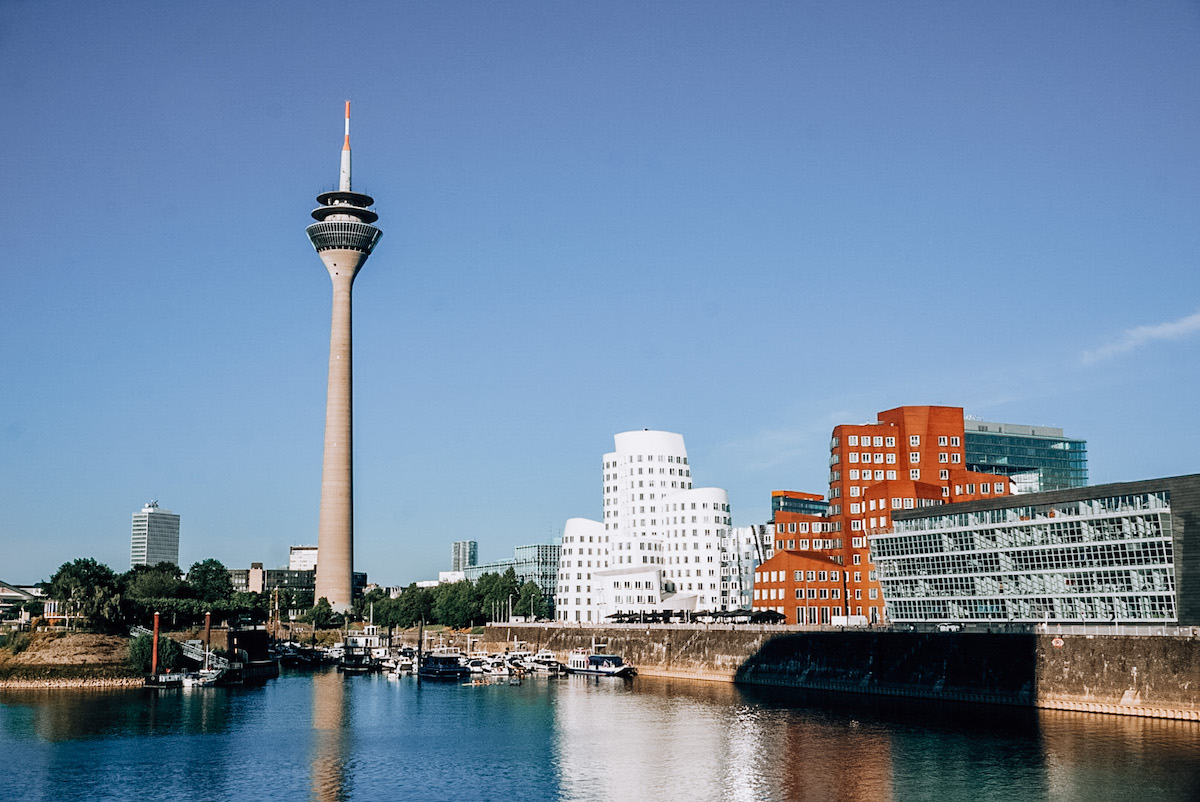
Known as the fashion capital of Germany, the “Village on the Düssel” is one of the chicer and more luxurious-feeling destinations in the country. Düsseldorf dates back to 1159 when the first settlement along the Düssel River sprang up.
Today, Düsseldorf is the capital of North-Rhine Westphalia and one of the largest cities in Germany. Many people visit Düsseldorf as a day trip from Cologne, but the city is well worth exploring in more depth — although the two cities complement each other wonderfully. Where Cologne is grittier and more casual, Düsseldorf is more upscale with plenty of shopping opportunities.
In this guide, I’ll be sharing the best things to do in Düsseldorf, including the top attractions, activities, and foods. Whether you’re interested in art, fashion, architecture, or good food, there’s something for everyone in Düsseldorf!
-Claire
Only Have 1 Day in Düsseldorf? Use This Itinerary!
I have a detailed 1-Day Düsseldorf Itinerary that takes you to many of the attractions shared in this guide, should you need help planning your route through the city.
Take a Walking Tour
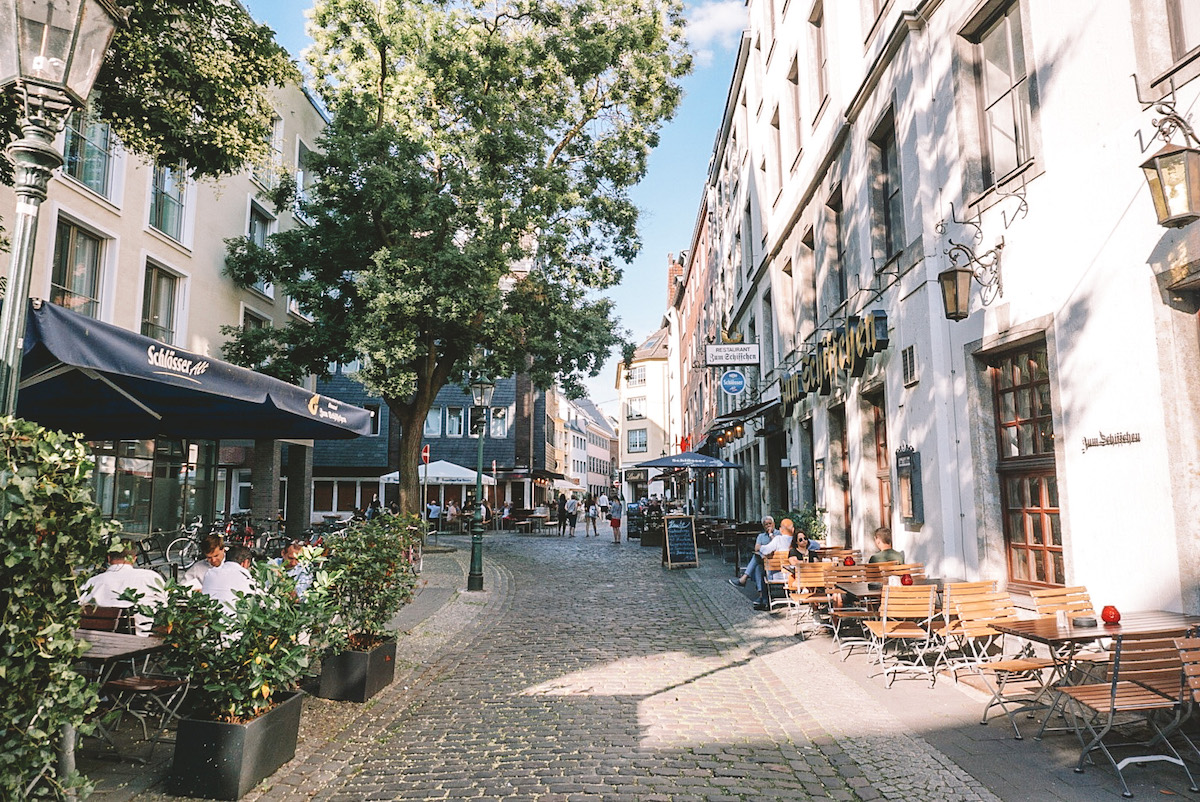
A great way to get to know Düsseldorf better is to take a guided walking tour. I go on a walking tour in almost every city I visit, and Düsseldorf was no exception!
Most Düsseldorf walking tours will take you through the Old Town, down the Königsallee, and along the Rhine Promenade, although there are also more niche tours that include beer tastings or go through popular areas like the MedienHafen and Little Tokyo.
If you’ll only be in Düsseldorf for a day or two, definitely book a walking tour as it’s the best way to see lots of the downtown area in a short amount of time.
Window Shop on Königsallee
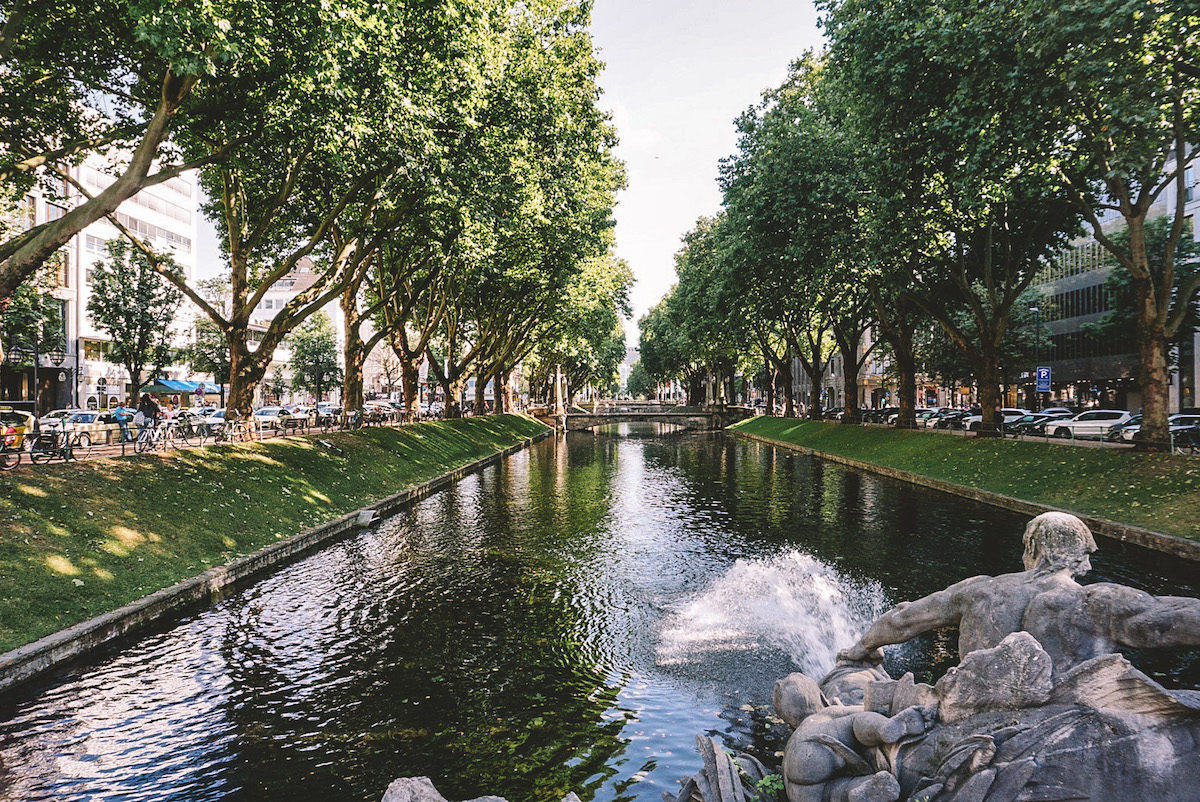
One of the top attractions in Düsseldorf is Königsallee, which was originally called “Kastanienallee.” When King Friedrich Wilhelm IV visited Düsseldorf in 1848, an angry crowd met him at the train station and threw manure at him. The King was furious, and the city’s reputation was ruined.
To appease the king and restore its reputation, the city renamed the famous boulevard Königsallee (King’s Boulevard). Today, it’s one of the preeminent boulevards in Germany.
There’s lush landscaping along the street, and the canal runs through the very center. Almost every shop is a luxury boutique (think: Armani, Bulgari, etc.) but there are some more mainstream chain stores represented as well.
I adore window-shopping and have no qualms admiring purses and jewelry that cost more than my yearly salary. But if that’s not your thing, Königsallee might not be your favorite place to visit in Düsseldorf.
I still think it’s worth strolling down this shopping street and taking pictures though, because the street itself is beautiful. There’s a fountain at the end that’s great for photos!
Explore the Old Town
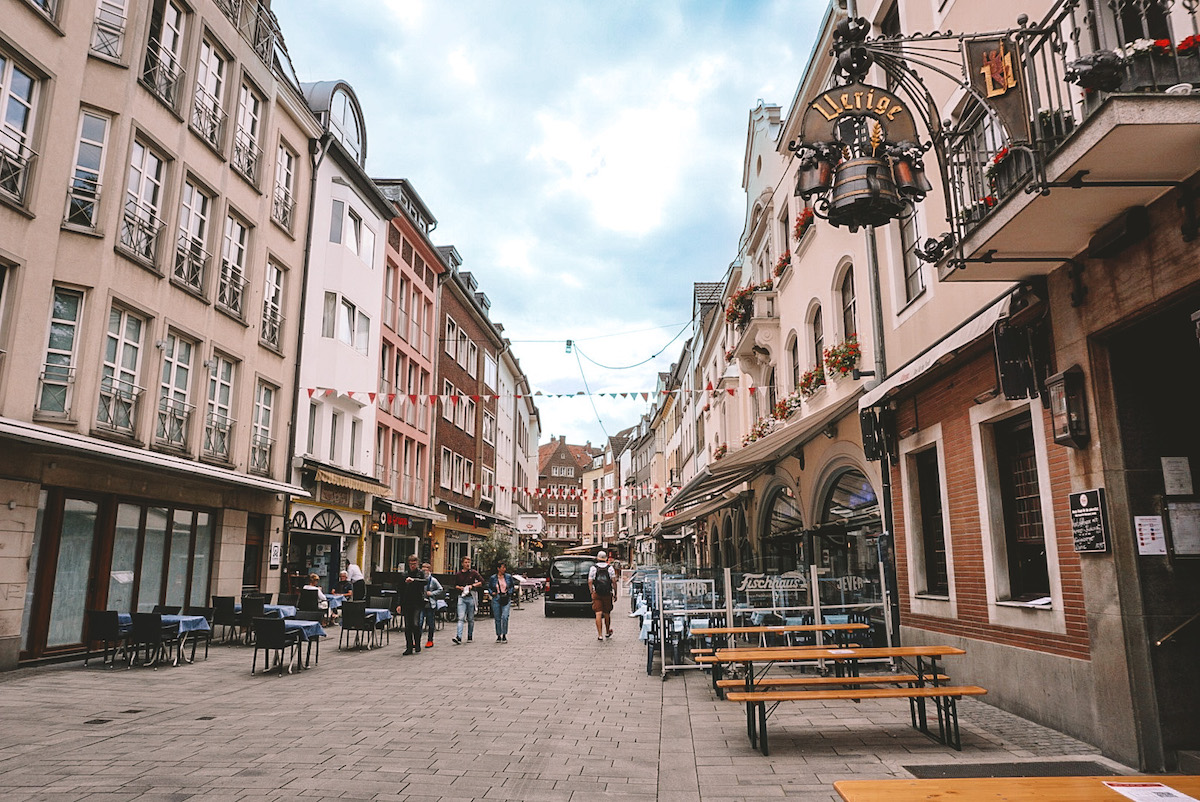
Düsseldorf’s Old Town is very small (it covers just half a kilometer of land) and is known for being the “longest bar in the world.” This special nickname is thanks to the nearly 260 bars, pubs, and restaurants that are crammed into the Old Town area.
While in Düsseldorf’s Old Town, you have to try Altbier. It’s a special kind of top-fermented beer brewed only in this region of Germany. (More than that I really can’t tell you because I don’t actually drink alcohol! But I’m all for sampling the local cuisine when traveling.)
Some of the best-known sights in Düsseldorf are located within the Old Town, such as St. Lambertus Basilica with its twisted spire, the Schlossturm (Palace Tower) which is now home to the Maritime Museum, and the lovely City Hall.
Shop at the Carlsplatz Market
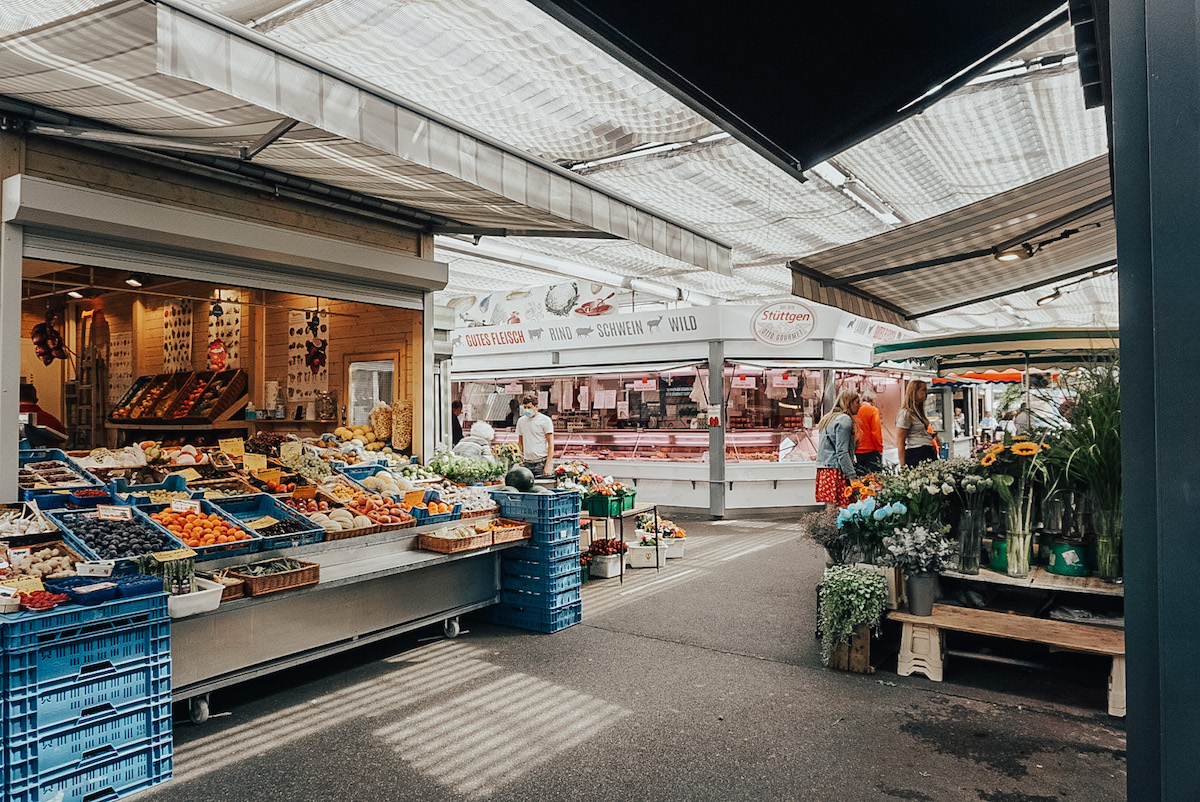
If you’re looking for a quick bite to eat in the Old Town, I recommend hitting up Carlsplatz. There are lots of independent food stalls here selling everything from dumplings to salad plates to curries.
There are also flower stalls and other small shops at Carlsplatz, so have a poke around even if you’re not hungry.
Claire’s Tip: Many of the stalls at Carlsplatz are cash only.
Visit the Kunstpalast Museum
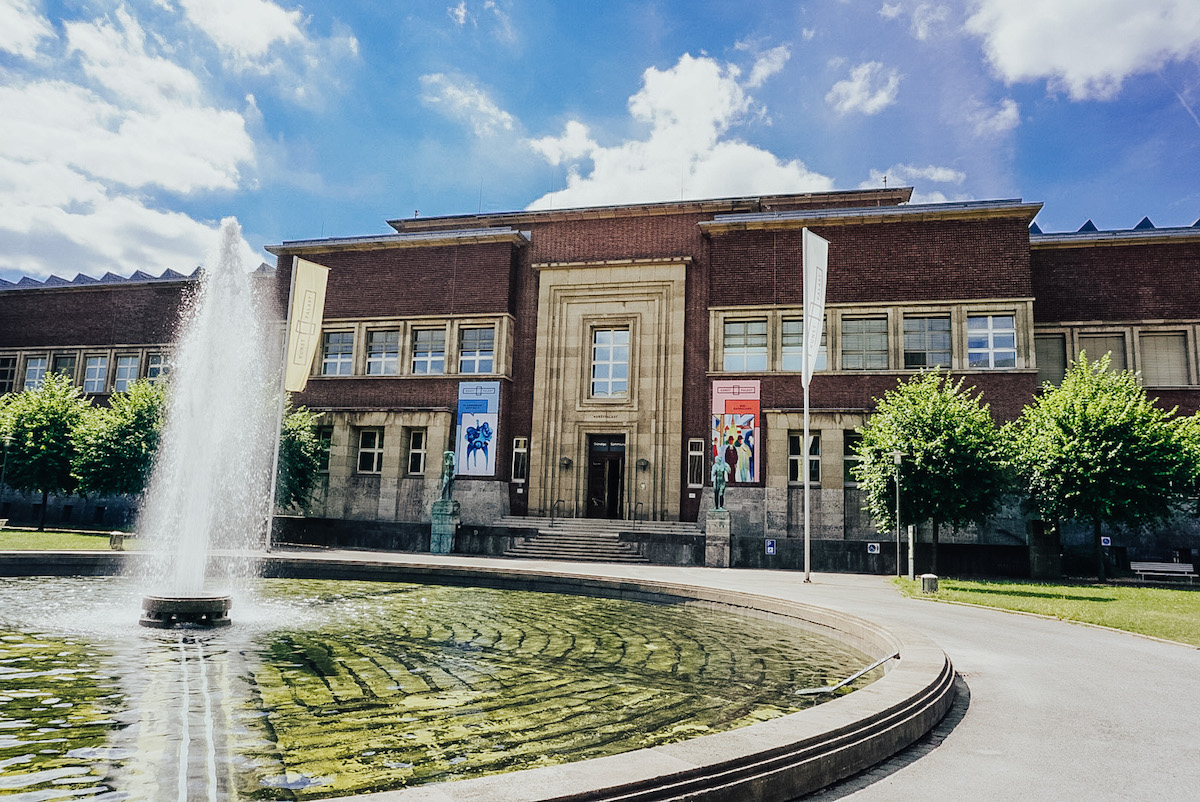
A 15-minute walk from the Old Town, the Kunstpalast Museum is Düsseldorf’s fine arts museum. (There are actually four or five major art museums all within walking distance of each other, but I was most excited by the exhibitions at the Kunstpalast).
The permanent exhibition showcases works of art from the Middle Ages through present day and provides a broad history of art. There’s also a sizable glass collection at the Kunstpalast, which boasts such treasures as ancient Egyptian earrings and treasures from the Renaissance and Art Nouveau eras.
A museum visit is one of the best things to do in Düsseldorf on rainy or snowy days, and the Kunstpalast is one of the finest in the city!
Tour Benrath Palace
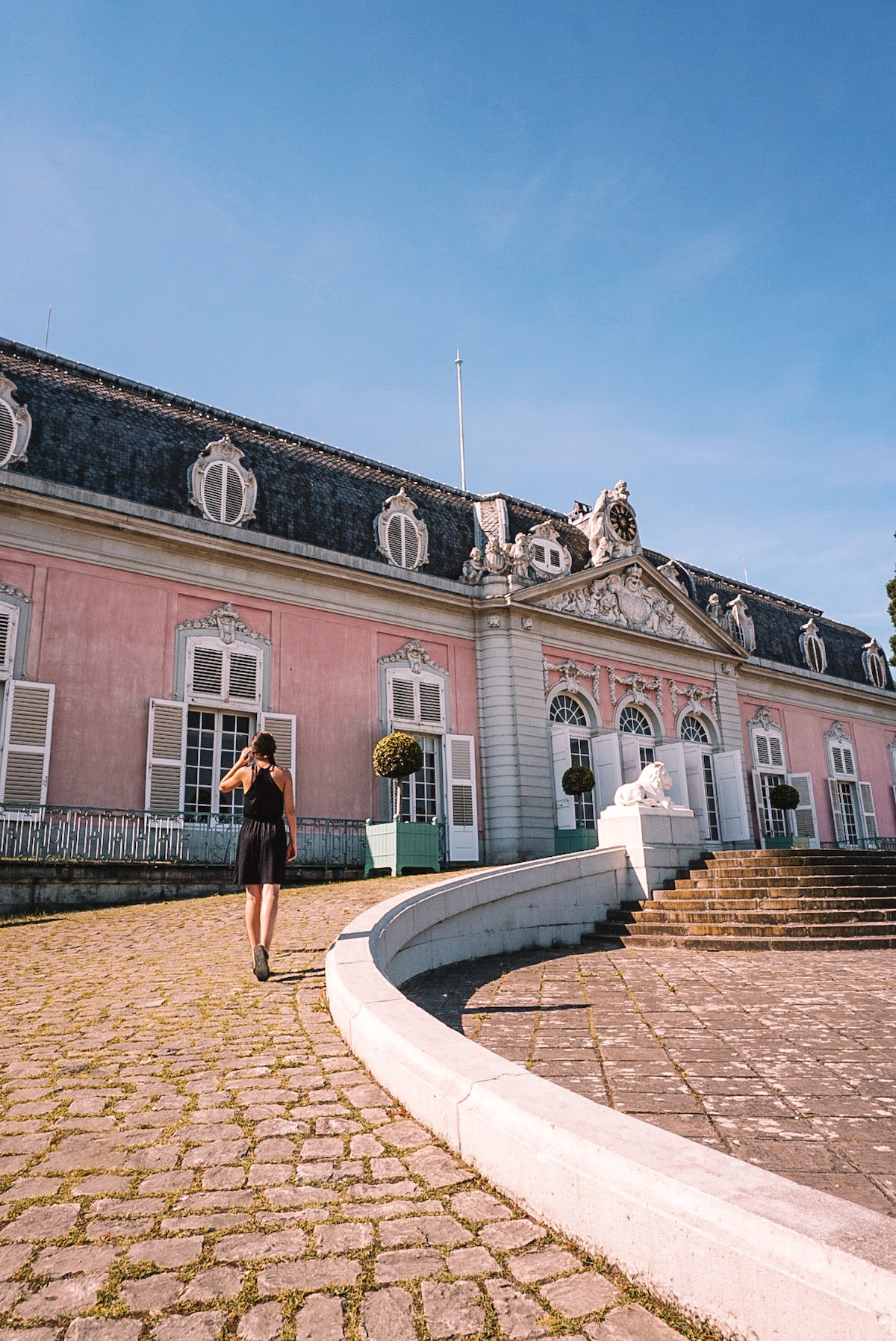
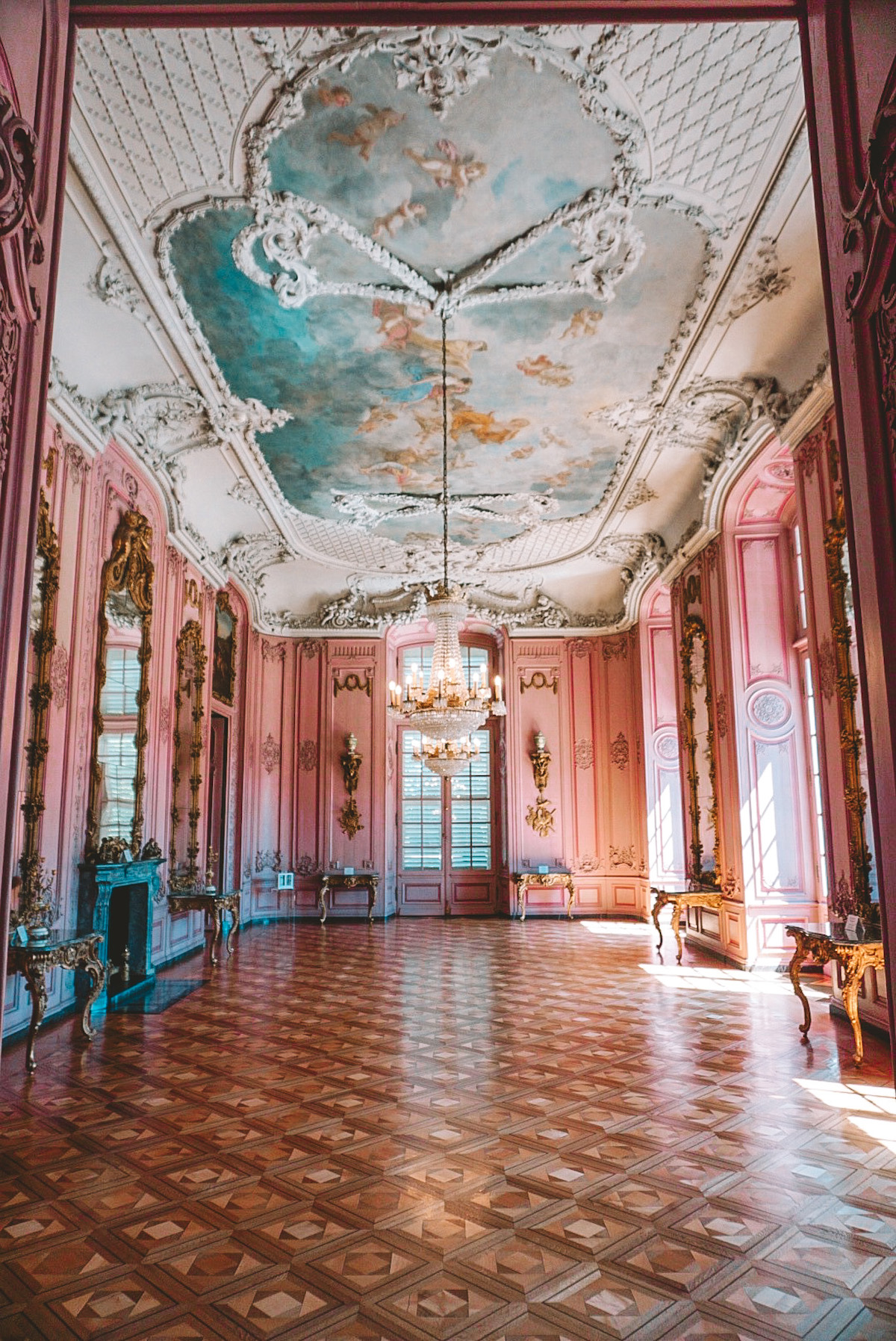
I was over the moon when I found out there’s a castle within Düsseldorf’s city limits. It’s called Benrath Palace (Schloss Benrath) and it’s now part palace, part museum(s).
Benrath Palace was completed in the 1770s and was commissioned by Elector Palatine Carl Theodore — who, ironically, never wound up living in this luxury palace he spent 15 years building.
The palace can only be seen on a guided tour, so be sure to book a time slot when you arrive. Although much of the palace is unfurnished, it’s absolutely stunning inside. The building is split down the middle; one side was Carl Theodore’s wing, the other side was his wife’s.
Schloss Benrath was built to be a summer pleasure palace, so many of the rooms were designed to accommodate a large number of guests for dinners, dances, and so on.
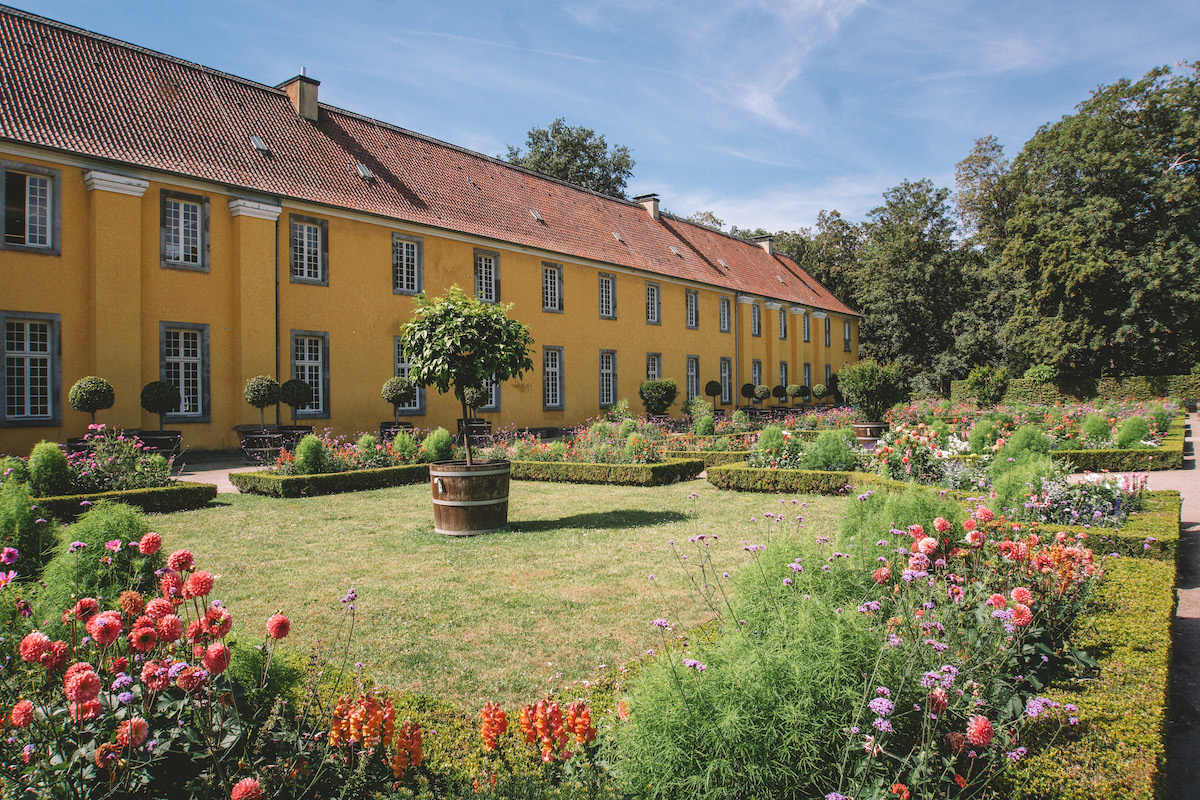
The palace sits on the most beautiful property. There’s a large garden out back that feels more like a forest (with perfectly trimmed hedges and walking paths, that is). There are also formal gardens on either side of the palace, my favorite being the orangery, which featured a stunning summer garden exploding in pinks, purples, and oranges.
The kitchen garden was also special, as it’s a working garden. There was a cart outside the kitchen garden where visitors could pay a couple Euros to take home the fresh produce that had been picked that day.
Claire’s Tip: Each room in the palace has a unique floor design! There are gorgeous wood floors throughout the palace, and each features a special pattern.
Walk Around the MedienHafen
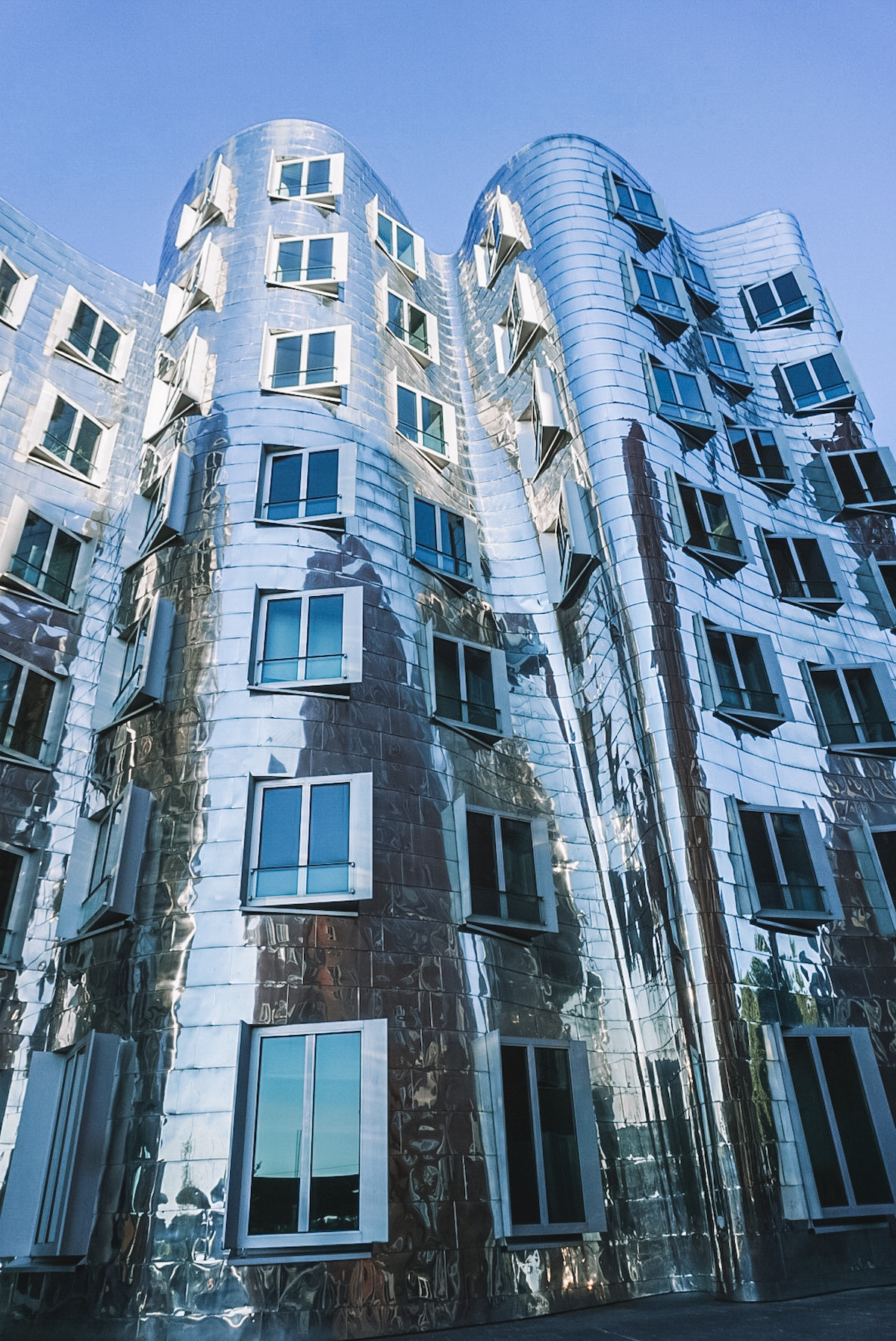
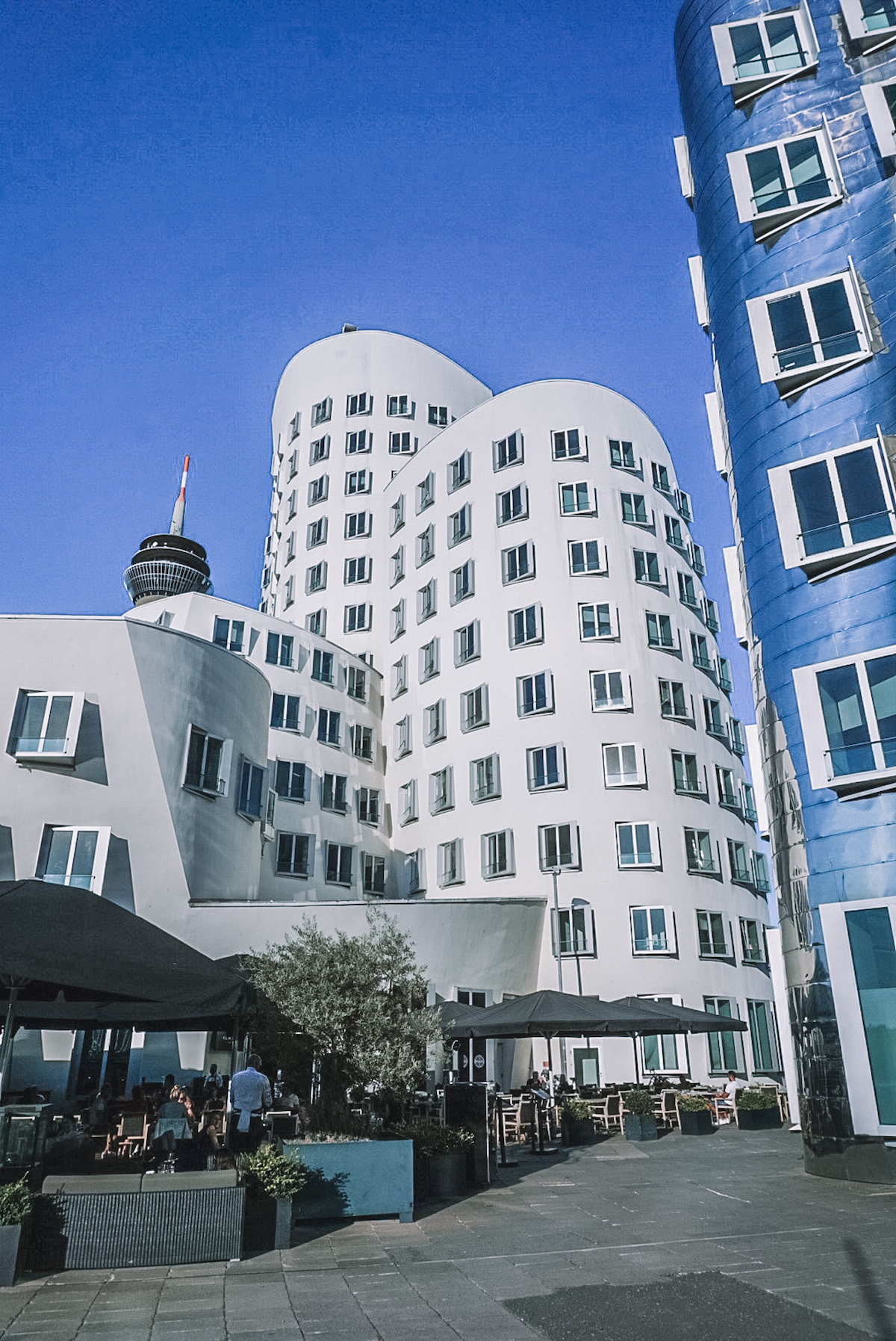
Right up there with the Old Town and Königsallee as being one of the best places to visit in Düsseldorf is the MedienHafen. Architecture buffs, prepare to feast your eyes on some of the most impressive buildings in Germany!
The name MedienHafen literally translates to “Media Harbor.” This area used to be a working harbor, but was transformed into a trendy area for media companies to base their businesses. Famous architects like Frank O. Gehry, David Chipperfield, Joe Coenen, Steven Holl and Claude Vasconi designed buildings here.
I say buildings, but they really are more like works of art. Each building in the MedienHafen was designed to reflect the area’s maritime heritage in some way, and if you look closely at them you can see how the architects were inspired by the waves on the Rhine and the ships that once docked at the harbor.
This is one Düsseldorf tourist attraction that is absolutely worth the hype!
See the Ruins at Kaiserswerth
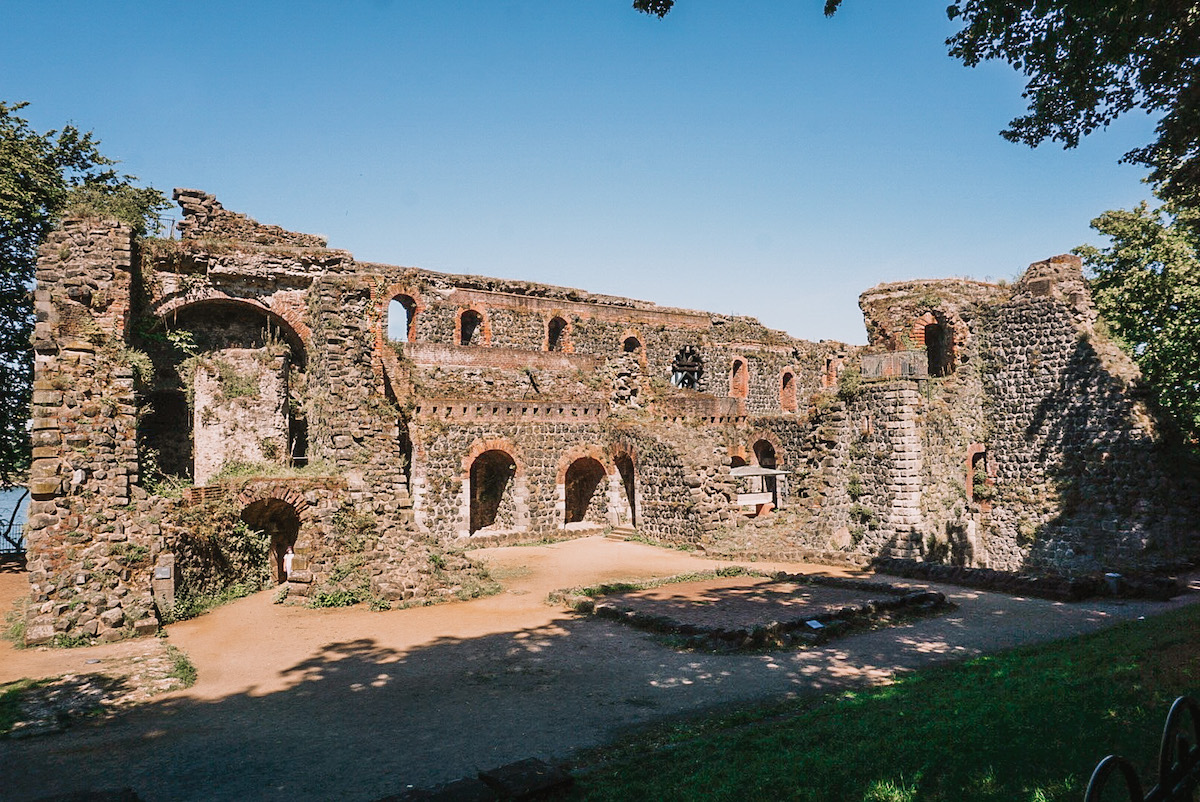
One of the more unique things to do in Düsseldorf is visit the quaint neighborhood of Kaiserswerth. Kaiserswerth is one of the oldest neighborhoods in the city, and it was once the seat of the Holy Roman Empire.
In the 12th century, Frederick I (Holy Roman Emperor and ruler of Germany) built a palace in Kaiserswerth. This palace, now called Kaiserpfalz, was destroyed in the 1700s following the war of Spanish succession. However, the ruins are open to the public and they’ve fortified the steps so you can walk up to the second story and get a feel for what the palace used to be like.
The neighborhood of Kaiserswerth is also so stinking cute! There are some gorgeous Baroque houses on the main street, and there’s also a picturesque walking trail by the Rhine River.
Claire’s Tip: I got to Kaiserswerth around 10 in the morning, and I highly recommend doing so if you plan on visiting. The neighborhood doesn’t seem to fully wake up until lunchtime, and I really felt like I had the place to myself for an hour or so.
Dine in Little Tokyo
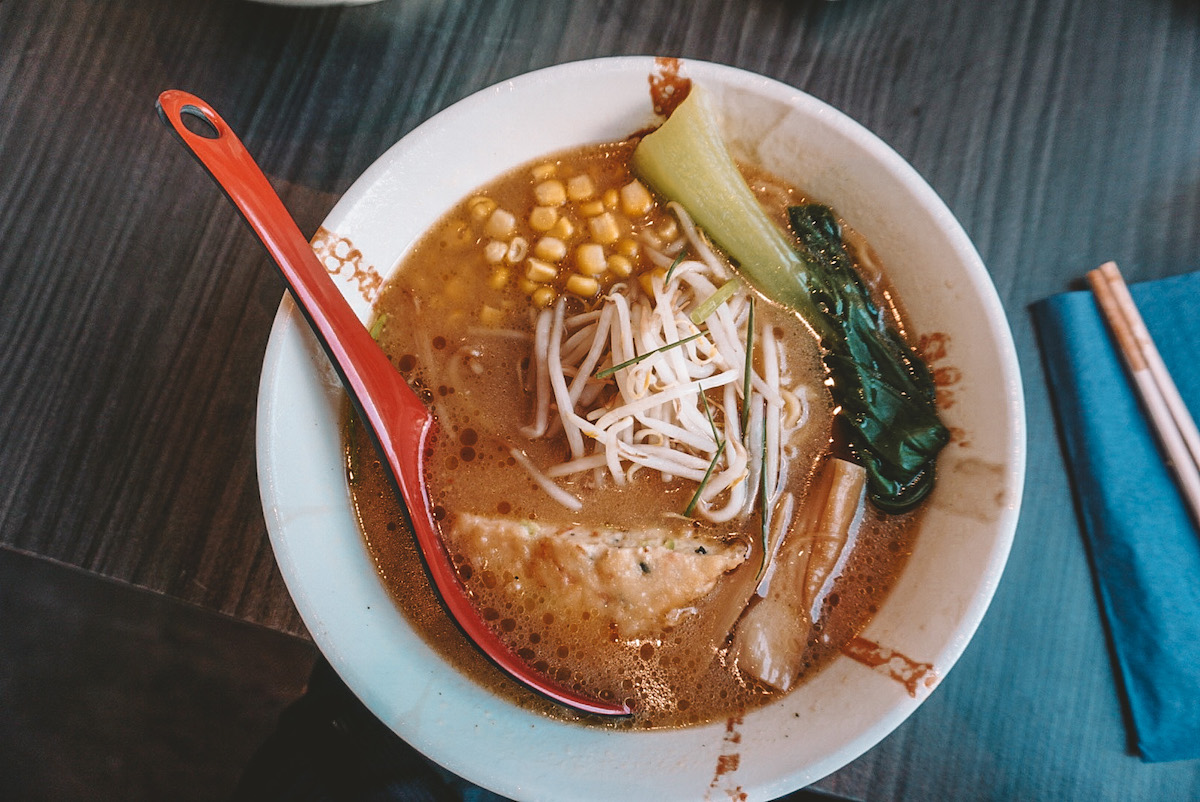
There’s not much “to do” in Düsseldorf’s Little Tokyo neighborhood, but there is so much good food here! Düsseldorf is home to the largest Japanese population in Germany, and you can find some fantastic Japanese cuisine here.
There are also plenty of Japanese bookstores, bakeries, and supermarkets in the area. I spent an hour or so strolling through Little Tokyo; it’s near the main train station, so it’s easy to find.
While in Little Tokyo, be sure to visit Takagi, which is the oldest Japanese bookstore in Europe. For food and drinks, head to Immermannstrasse and Klosterstrasse; these two streets make up Düsseldorf’s “Japanese restaurant mile.”
Claire’s Tip: If you’re fortunate to visit Düsseldorf in late May / early June, check to see if Japan Day is happening during your visit. On Japan Day, Little Tokyo is flooded with cosplayers and there’s lots of Japanese food, music, and performances to enjoy. The day ends with the largest Japanese fireworks display in Europe! It’s without a doubt one of the top attractions in Düsseldorf.
Admire the Local Churches
While you’re in the city center, it’s worth popping into a few of the local churches. There are a surprising number of historic churches peppered around the city, and each has a unique design.
The two must-see churches in Düsseldorf are St. Lambertus Basilica and St. Andrews.
St. Andrews Church (St. Andreas-Kirche)
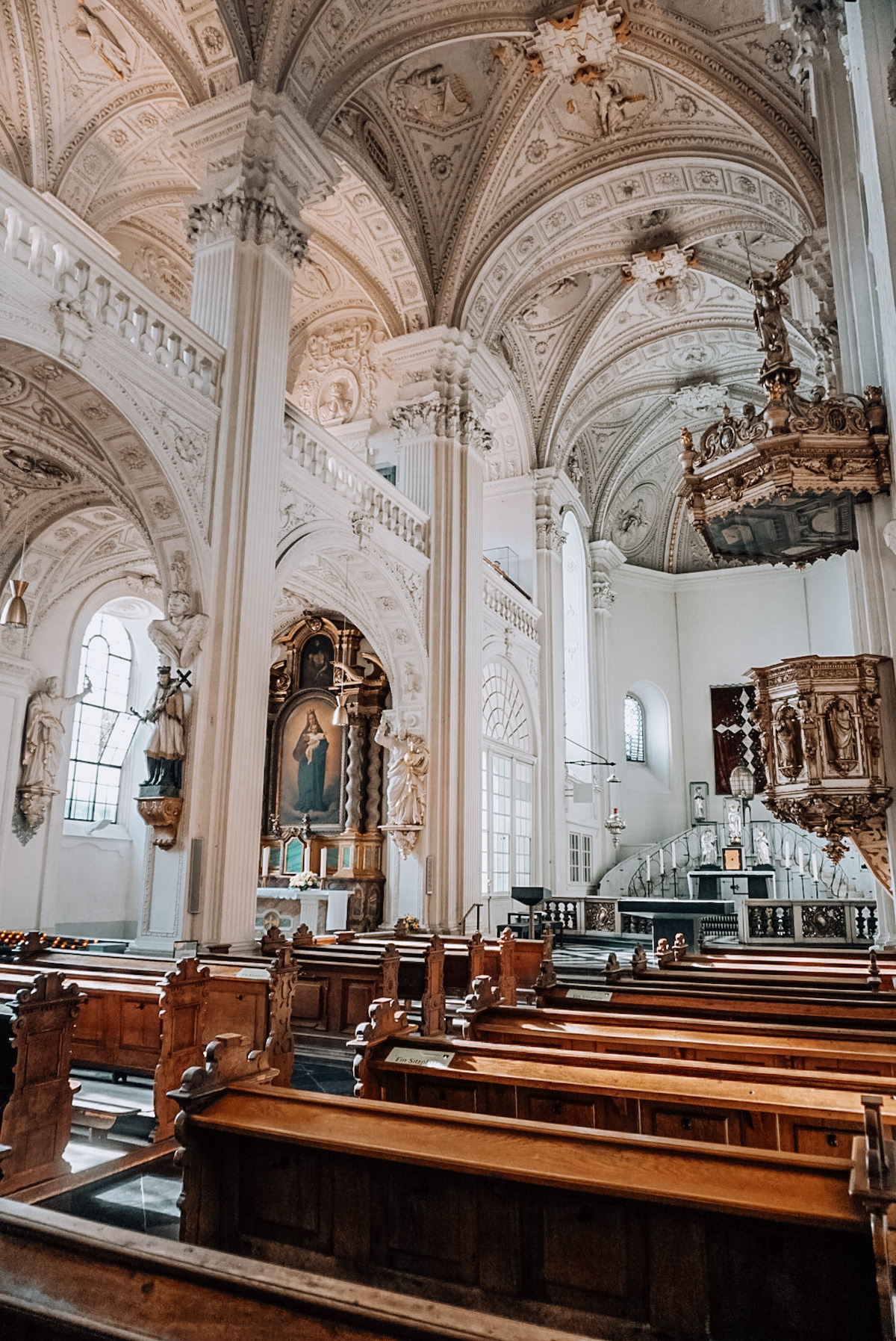
Located within Düsseldorf’s Old town, St. Andrew’s Church was completed during the Thirty Years’ War.
Its unique architectural style toes the line between the ending of the German Renaissance and the beginning of the Baroque period.
St. Lambertus Basilica
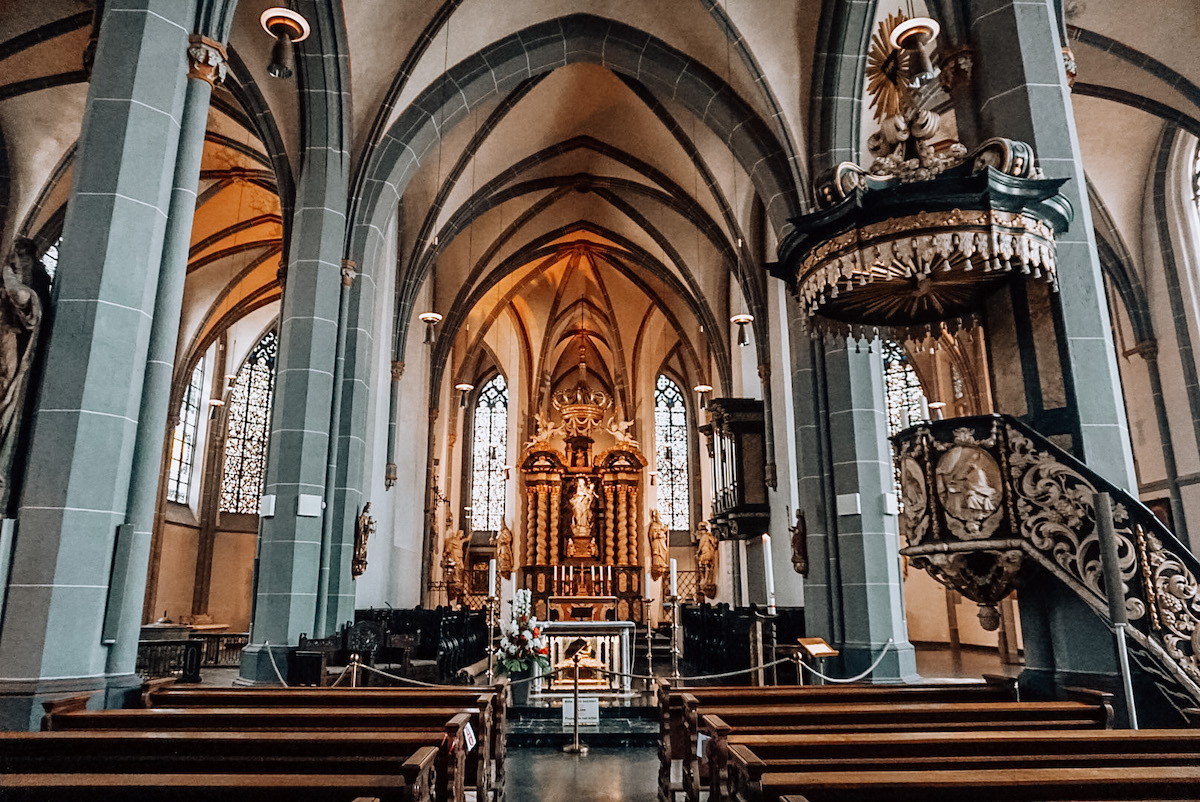
The twisted spire of St. Lambertus is a Düsseldorf icon, and the city’s skyline wouldn’t be the same without it.
St. Lambertus was founded in 1288 (the same as the city itself). It was built as a three-aisled church in the Lower Rhine brick Gothic style. In 1815, a fire destroyed the spire — after being rebuilt, the spire became warped and twisted.
Legend has it that the spire got twisted when the devil tried to uproot St. Lambertus from the ground (although more than likely, fresh wood was used to rebuild the spire, which caused it to twist over time).
St. Lambertus is a must-see sight Düsseldorf!
Rhine River Promenade
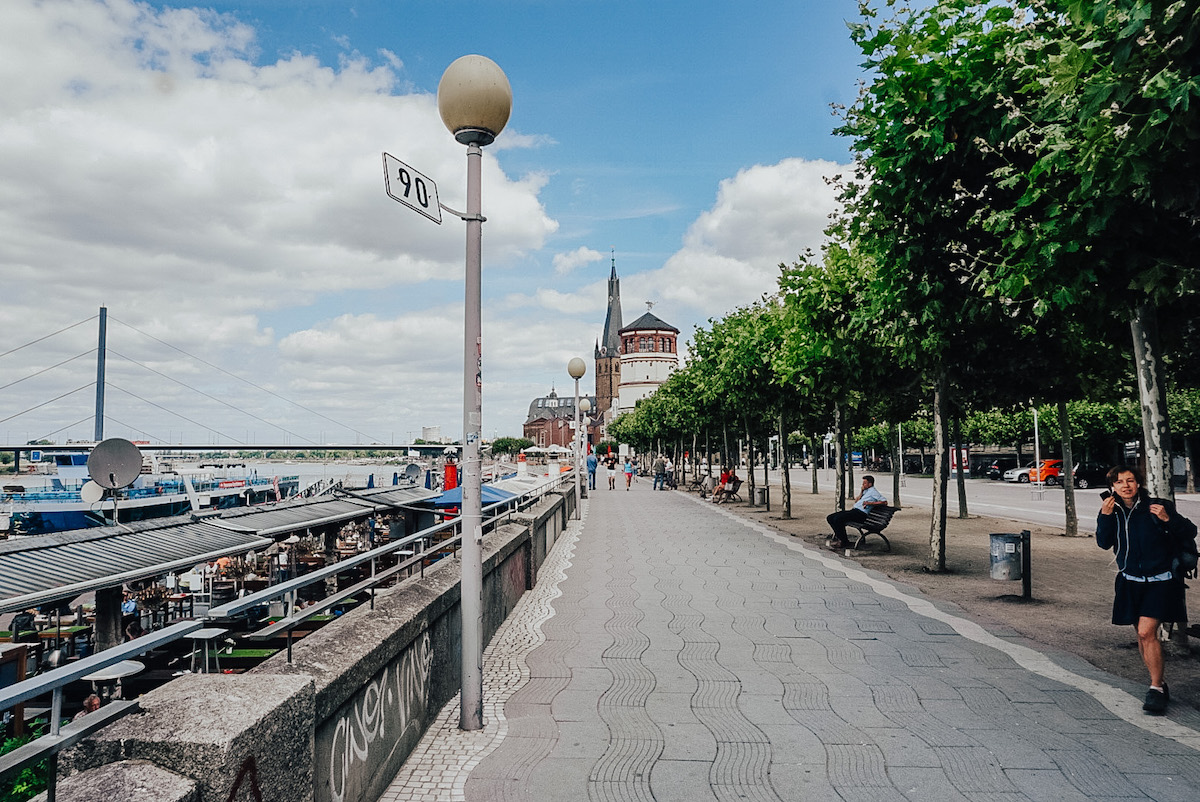
The edge of the Old Town butts up against the Rhine River, and a promenade stretches from the Old Town down to the MedienHafen and is the perfect place for a sunset stroll.
In the summer, you can also access a few of the city beaches right off of the Rhine Promenade.
Stroll Through the Hofgarten
The Hofgarten (Court Garden) is the first and oldest public park in Germany. The park was created in 1769, following the devastation of the Seven Years’ War.
The governor wanted the rubble from the destroyed buildings to be cleared away but also recognized the need to create jobs in order to revive the economy. The creation of the Hofgarten provided 700 jobs, and a beautiful green space for locals to enjoy year-round, to boot!
The Hofgarten is an English-style park (i.e. lots of open space and not over landscaped), and the Düssel River passes through on its way to meet the Rhine River.
Take a Day Trip to Cologne
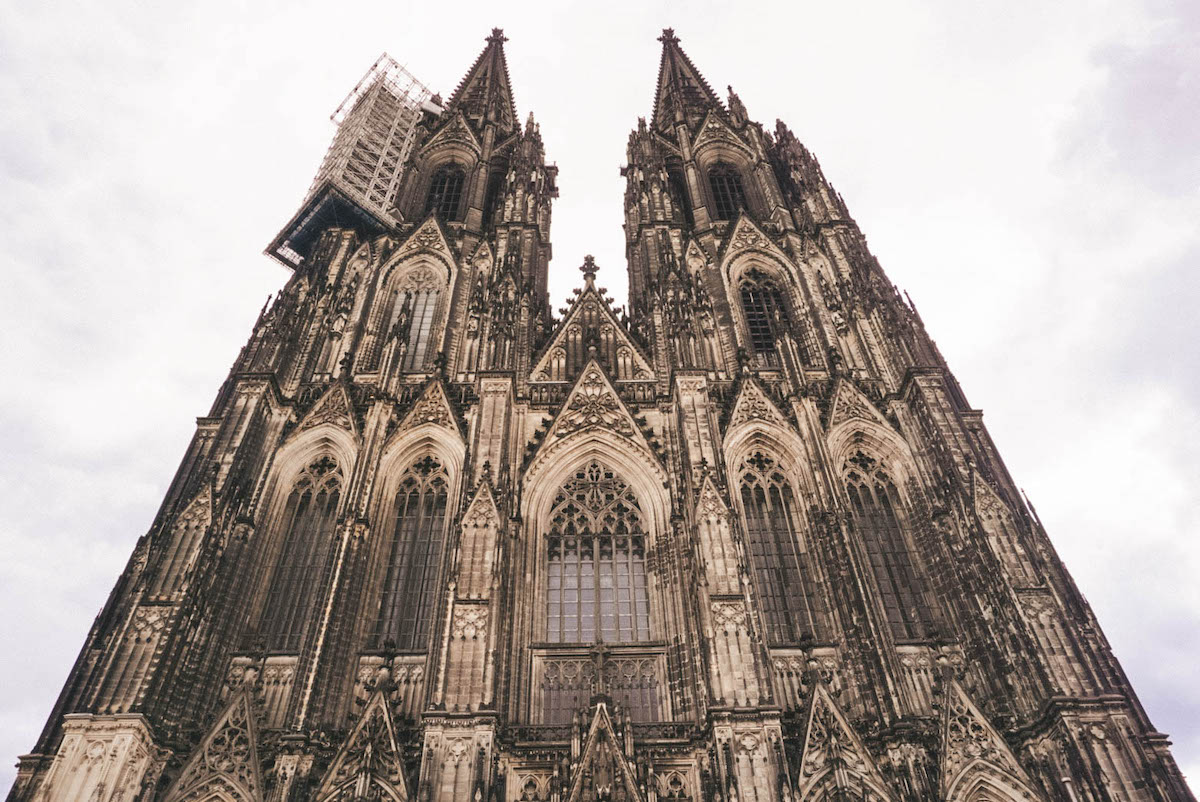
The whole reason I visited Düsseldorf in the first place is because it’s said to be a good day trip from Cologne, and vice versa. However, let me make one thing clear: one day is NOT enough time to properly see Cologne.
If you truly have just one day to explore Cologne, I recommend getting there early and leaving late. It’s such a special city and complements Düsseldorf nicely.
Cologne is much uglier (locals will proudly agree with me), whereas Düsseldorf clearly is much wealthier and can afford to build nicer homes. If you’re in Cologne for just one day, definitely visit the cathedral and take a walking tour if possible to learn about the city’s fascinating history.
For more things to do in the city, check out my blog post detailing what to do in Cologne or plan your day using my 1-day Cologne itinerary.
Claire’s Tip: For additional day trip suggestions, here’s a list of my favorite day trips from Düsseldorf.
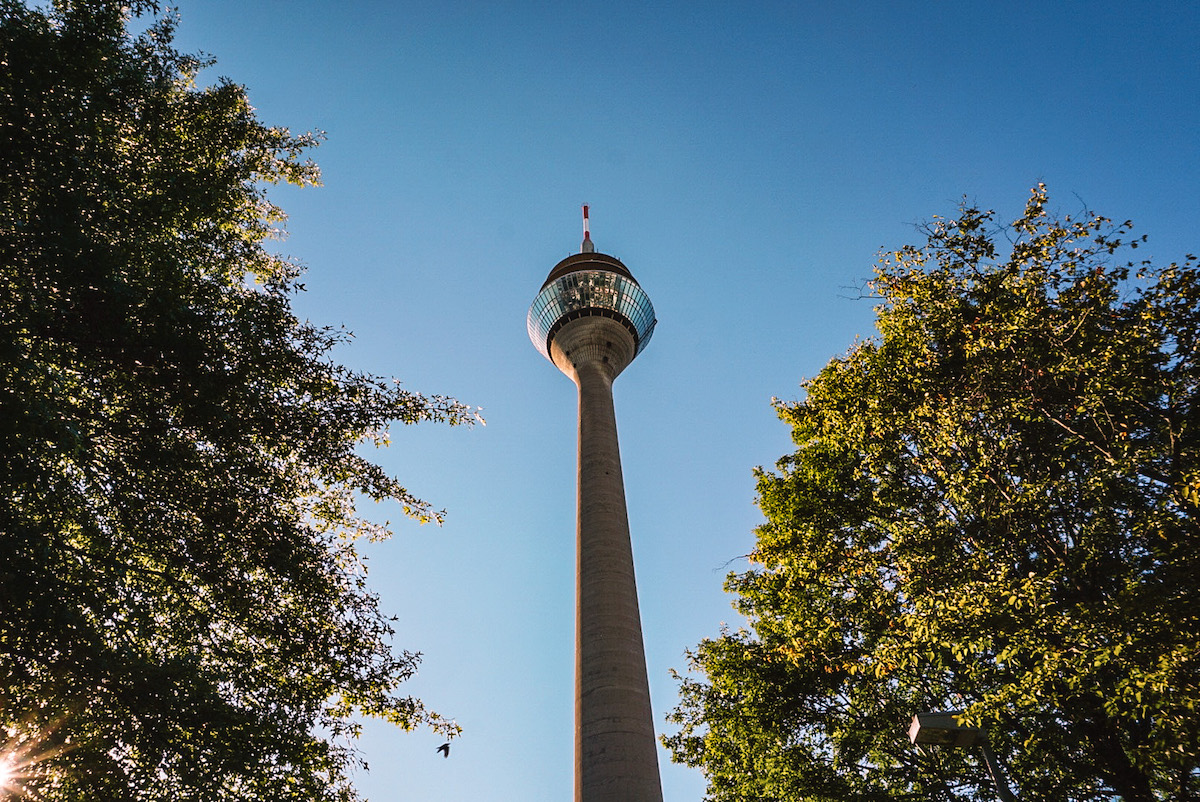
Even More Things to Do in Düsseldorf!
There are so many more things to do and see in Düsseldorf than I’ve mentioned in this guide, because I haven’t visited them all yet. I only recommend attractions I can personally vouch for, but below are additional things to do in Düsseldorf that come highly recommended:
- Heinrich Heine’s Birthplace — The house where the German writer and poet was born is now a bookstore called Müller & Böhm.
- Classic Remise — A collection of garages, services, and dealers for vintage and classic cars. I’ve been to their location in Berlin, and it feels partly like an exhibit and partly like a working garage.
- Goethe Museum — One of the largest archives dedicated to the German poet, writer, and philosopher Johann Wolfgang von Goethe.
- Kunstsammlung Nordrhein-Westfalen — The city’s modern art museum.
- City Museum — The oldest museum in Düsseldorf. The exhibition details the city’s history from its founding to the present day.
- Rheinturm (Rhein Tower) — A 172.4-meter tall tower that offers a fantastic view of the city.
Frequently Asked Questions
If I had to say how much time you need to visit this gorgeous city, I’d say 48 full hours would be ideal. But for those of you who enjoy traveling at a slower pace or who like doing things a bit off the beaten path, I think two and a half to three full days in Düsseldorf is perfect.
Düsseldorf is known for being the fashion capital of Germany, as well as its art and music scene.
While in Düsseldorf, you need to try Altbier, which is a top-fermented beer that’s copper in color. It’s only brewed in this region of Germany, and you can try it anywhere in the Old Town.
Another favorite local booze is Killepitsch, which is an herbal liqueur that’s intended to be sipped slowly after a hearty meal.
I also recommend sampling Halve Hahn, which is a rye bread roll topped with mustard, Gouda cheese, and sometimes pickles and / or butter.
Düsseldorf is also known for its mustard (helpfully called “Aechter Düsseldorfer Mostert” or “Real Düsseldorf Mustard”). Düsseldorf mustard is very strong and is sold in tiny earthenware pots, so it makes a great souvenir!
The Düsseldorf Card provides free local transportation and discounts on the top attractions in the city. You can buy a card for a 24 to 96 hour time frame.
If you live in Germany and have a 49 Euro Deutschland Ticket, I’m not sure the Düsseldorf Card is a must. However, if you’re visiting from outside the country and plan on seeing a lot of the paid attractions (such as museums, guided tours, etc.) then I suggest combing through all the discounts included with the Düsseldorf Card to see if it makes sense for you.
The top places to see in Düsseldorf in one day are:
Old Town
St. Lambertus Basilica
MedienHafen
Königsallee
Little Tokyo
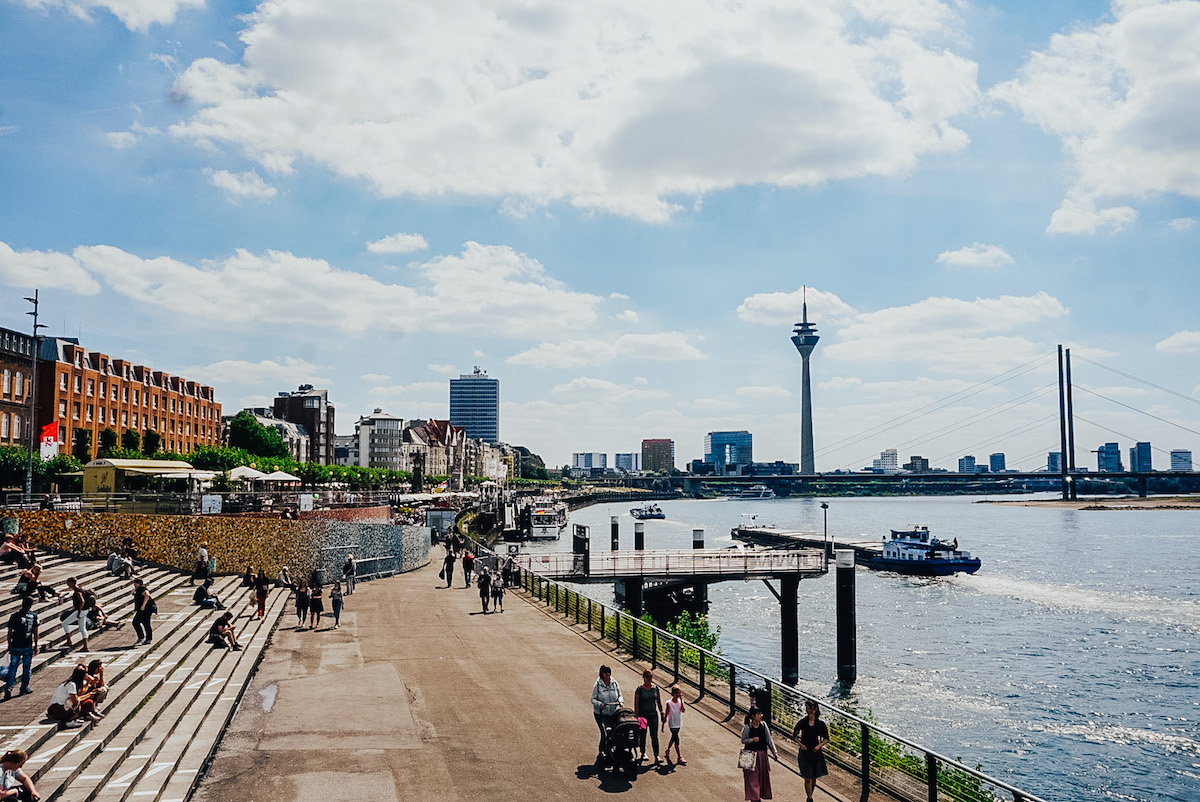
Is Düsseldorf Worth Visiting? Final Thoughts
Gorgeous architecture, good food, and friendly locals — Düsseldorf has it all! If you’re planning a trip to western Germany, then Düsseldorf is definitely worth visiting. It’s just 30 minutes from Cologne, and you can see quite a bit of the city center in a single day.
If you have any questions about what to do in Düsseldorf, drop me a comment below!
Don’t forget to follow me on Instagram to keep up with my daily adventures in Berlin and beyond!

Comments & Reviews
Thank you so much for the tips! We will be in Cologne from October 28 to October 30, then travel bi train to Frankfurt on October 30 until November 2, 2025.We are looking for places to visit and see in Frankfurt.
Thanks,
Hi Joann! It sounds like you’ve got a fun trip planned! I have a guide to Frankfurt’s Old Town that should keep you busy for 1 to 2 days, depending on how many museums you visit.
If you have an extra day that you’d like to fill, there are some great day trips in the Frankfurt area (Wiesbaden and Mainz are both less than 30 minutes away and are especially great for experiencing the local wine culture!). You can find all of my Frankfurt suggestions here: https://tallgirlbigworld.com/category/europe-2/germany/frankfurt/
Feel free to reply to this comment or send me an email if you have follow-up questions!